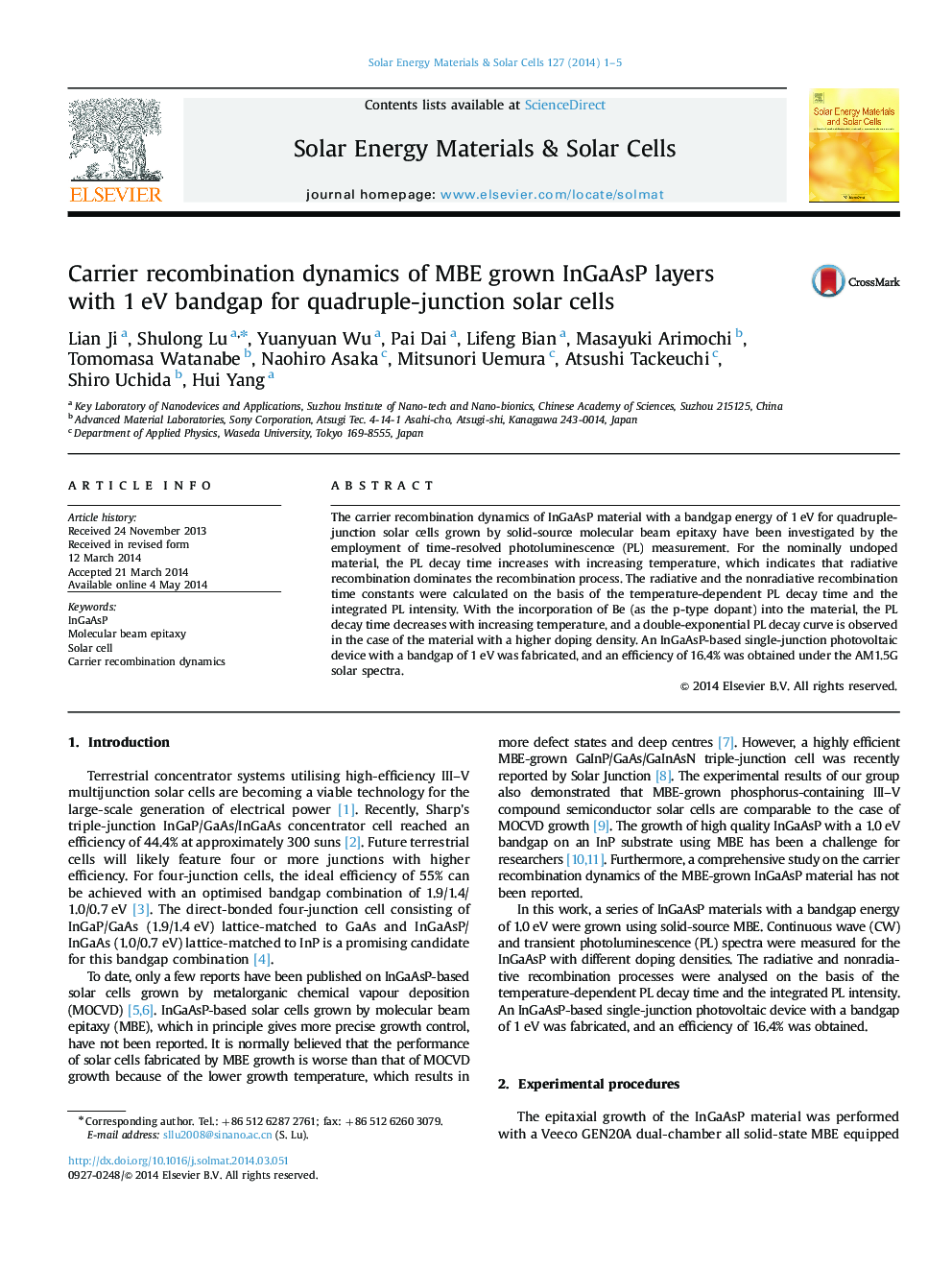| Article ID | Journal | Published Year | Pages | File Type |
|---|---|---|---|---|
| 78123 | Solar Energy Materials and Solar Cells | 2014 | 5 Pages |
•Carrier recombination dynamics in InGaAsP grown by molecular beam epitaxy is investigated.•The radiative and nonradiative recombination time constants are calculated.•At room temperature, the nonradiative processes dominate the recombination.•Higher doping density leads to shorter PL decay time.•InGaAsP-based single-junction solar cell with 1 eV bandgap is demonstrated.
The carrier recombination dynamics of InGaAsP material with a bandgap energy of 1 eV for quadruple-junction solar cells grown by solid-source molecular beam epitaxy have been investigated by the employment of time-resolved photoluminescence (PL) measurement. For the nominally undoped material, the PL decay time increases with increasing temperature, which indicates that radiative recombination dominates the recombination process. The radiative and the nonradiative recombination time constants were calculated on the basis of the temperature-dependent PL decay time and the integrated PL intensity. With the incorporation of Be (as the p-type dopant) into the material, the PL decay time decreases with increasing temperature, and a double-exponential PL decay curve is observed in the case of the material with a higher doping density. An InGaAsP-based single-junction photovoltaic device with a bandgap of 1 eV was fabricated, and an efficiency of 16.4% was obtained under the AM1.5G solar spectra.
Graphical abstract(a) The temperature dependence of the PL decay time TL for the nominally undoped InGaAsP Sample A. The inset displays the PL decay curve. (b) The temperature dependence of the PL decay time TL for the Be-doped InGaAsP Sample B (lower doping density). The inset displays the PL decay curve. (c) The temperature dependence of the PL decay time TL for the Be-doped InGaAsP Sample C (higher doping density). The inset displays the PL decay curve. (d) Current density–voltage (J–V) characteristic curves of the InGaAsP solar cell under the AM1.5G solar spectra.Figure optionsDownload full-size imageDownload as PowerPoint slide
